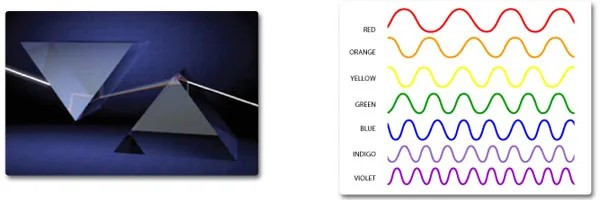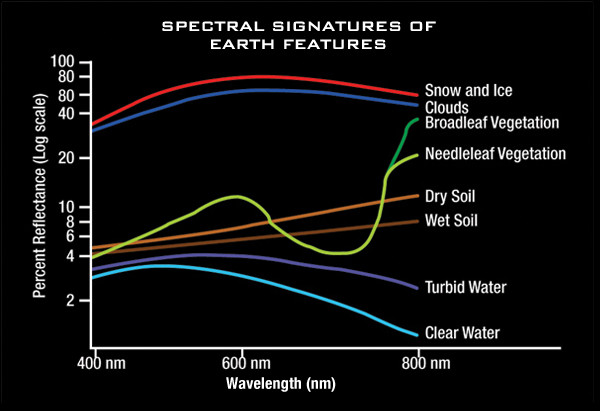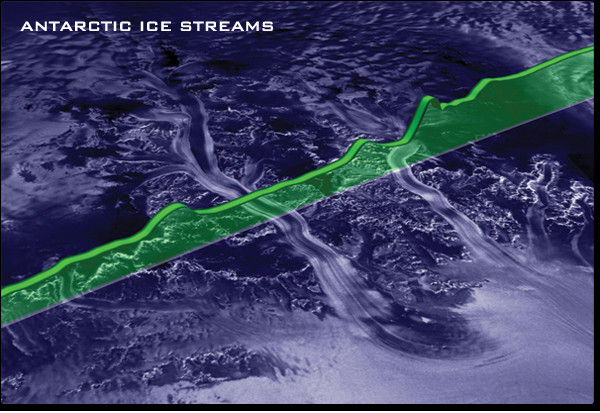Visible light, the portion of the electromagnetic spectrum our eyes can perceive, travels as waves, allowing us to see the beauty of Vietnam’s landscapes. At SIXT.VN, we help you explore these vibrant sights with ease, offering comprehensive travel solutions from airport transfers to guided tours. Discover how understanding light enhances your travel experience, unlocking the secrets of color and perception while planning your perfect Vietnam getaway with incredible sightseeing adventures.
1. Understanding Visible Light: A Traveler’s Perspective
Visible light travels as electromagnetic waves, enabling us to see the world around us, including the stunning landscapes of Vietnam. These waves are part of a broader spectrum, but they are unique because our eyes can detect them, allowing us to experience the beauty of destinations like Hanoi.
What is the Visible Light Spectrum?
The visible light spectrum is the range of electromagnetic radiation that the human eye can see, typically spanning wavelengths from 380 to 700 nanometers. This spectrum is essential for experiencing the colors and visual details of destinations like Vietnam. Think of vibrant markets, lush rice paddies, and bustling city streets, all brought to life by visible light.
How Does Wavelength Affect What We See?
Different wavelengths within the visible light spectrum correspond to different colors. Violet has the shortest wavelength (around 380 nm), while red has the longest (around 700 nm). This variation in wavelength is why we perceive the diverse range of colors in the world, from the deep blues of Ha Long Bay to the fiery reds of Vietnamese sunsets.
 Illustration of the visible light spectrum, showcasing different wavelengths and corresponding colors
Illustration of the visible light spectrum, showcasing different wavelengths and corresponding colors
Can We See the Entire Electromagnetic Spectrum?
No, the human eye can only detect a small portion of the electromagnetic spectrum known as visible light. Other forms of electromagnetic radiation, like ultraviolet (UV) and infrared (IR), are invisible to us. This limitation highlights how our perception of the world is only a fraction of what’s actually present.
2. The Journey of Light: From Source to Sight
Light from sources like the sun travels to our eyes, allowing us to perceive the world. Understanding this journey is crucial for appreciating how we see the vibrant colors and landscapes around us, especially in a visually rich country like Vietnam.
How Does Light Travel from the Sun?
Light from the sun travels through space as electromagnetic waves. When it reaches Earth, it interacts with the atmosphere and objects on the ground, allowing us to see. This process is vital for experiencing the natural beauty of Vietnam.
What Happens When Light Interacts with Objects?
When light strikes an object, it can be absorbed, reflected, or transmitted. The colors we see are the wavelengths of light that are reflected. For example, a green leaf reflects green light and absorbs other colors. This principle explains why we see the colors we do in Vietnam’s lush landscapes.
How Does the Eye Detect Light?
The human eye contains cone-shaped cells that act as receivers tuned to the wavelengths of visible light. These cells convert light into electrical signals, which are then sent to the brain for interpretation, allowing us to perceive the colors and visual details of our surroundings.
3. Light, Color, and Temperature: Unveiling Connections
The color of light emitted by an object is related to its temperature. Understanding this relationship can provide insights into the properties of celestial bodies and the science behind everyday phenomena, such as the color of flames.
How Does Temperature Affect the Color of Light?
As objects get hotter, they radiate energy with shorter wavelengths, changing color from reddish to bluish. This phenomenon is evident in flames and stars, where temperature dictates the color of the light emitted.
What Does the Color of a Star Tell Us?
The color of a star indicates its surface temperature. For example, a reddish star like Betelgeuse is cooler than a bluish star like Rigel. Our sun appears yellow because its surface temperature is around 5,500°C.
 Illustration comparing the colors of stars with different temperatures
Illustration comparing the colors of stars with different temperatures
How Can We Apply This Knowledge to Travel?
Understanding the relationship between light and temperature can enhance your travel experiences. For instance, knowing how the sun’s angle affects the color of landscapes can help you plan the best times for photography.
4. Spectra and Spectral Signatures: Unlocking Hidden Properties
Spectra and spectral signatures provide valuable information about the composition and properties of objects. Analyzing the visible light spectrum can reveal hidden details about celestial bodies and even features on Earth.
What Are Absorption Lines in the Visible Light Spectrum?
Absorption lines are dark lines in the visible light spectrum that indicate the presence of specific elements. These lines occur when elements in an object’s atmosphere absorb certain colors of light.
How Are Spectral Signatures Used?
Spectral signatures are graphs of an object’s reflectance across a spectrum. They can reveal unique properties of elements, molecules, and even cell structures. These signatures are used in various fields, including remote sensing and environmental monitoring.
 Graph showing spectral signatures of different Earth features
Graph showing spectral signatures of different Earth features
What is Remote Sensing?
Remote sensing involves using sensors to gather information about an object or area from a distance. Analyzing the visible light spectrum is a common remote sensing technique, allowing scientists to study the Earth’s surface and atmosphere.
5. Applications of Visible Light: From Altimetry to Everyday Life
Visible light has numerous applications, ranging from scientific research to everyday technologies. Understanding these applications can help you appreciate the role of light in our lives and the world around us.
What is Laser Altimetry?
Laser altimetry is an active remote sensing technique that uses lasers to measure the elevation of a surface. NASA’s Geoscience Laser Altimeter System (GLAS) uses this technique to calculate the elevation of Earth’s polar ice sheets.
How is Visible Light Used in Everyday Technologies?
Visible light is used in a variety of technologies, including lighting, displays, and optical communication. From the LED screens of our smartphones to the lasers used in barcode scanners, visible light plays a crucial role in modern life.
 Image illustrating laser altimetry measurements of ice streams in Antarctica
Image illustrating laser altimetry measurements of ice streams in Antarctica
How Can Travelers Benefit from Understanding Light?
Travelers can benefit from understanding light by optimizing their photography, planning their itineraries around the best lighting conditions, and appreciating the science behind natural phenomena like sunsets and rainbows.
6. Exploring Hanoi: How Light Shapes the City’s Charm
Hanoi, with its rich history and vibrant culture, is a city where light plays a significant role in shaping its charm. From the golden hour illuminating ancient temples to the colorful lights of the night markets, Hanoi offers a sensory feast enhanced by visible light.
How Does Light Affect Hanoi’s Architecture?
The architectural designs of Hanoi’s temples and buildings often incorporate elements that play with light, creating stunning visual effects. The interplay of light and shadow enhances the beauty of these structures, especially during sunrise and sunset.
What Role Does Light Play in Hanoi’s Street Life?
Street life in Hanoi is vibrant and bustling, and light plays a crucial role in setting the atmosphere. The warm glow of streetlights and lanterns creates a welcoming ambiance, inviting travelers to explore the city’s hidden gems.
Best Times to Photograph Hanoi:
- Early Morning: Capture the soft, diffused light illuminating the Old Quarter and Hoan Kiem Lake.
- Golden Hour (Late Afternoon): Witness the warm, golden light bathing the city’s landmarks, creating stunning photo opportunities.
- Night: Explore the vibrant night markets and capture the colorful lights reflecting off the streets.
7. SIXT.VN: Illuminating Your Travel Experience in Vietnam
SIXT.VN provides comprehensive travel solutions, making it easier for you to explore Vietnam’s beautiful destinations. Our services include airport transfers, hotel bookings, and guided tours, ensuring a seamless and enjoyable travel experience.
How SIXT.VN Enhances Your Travel Experience:
- Airport Transfers: Enjoy a hassle-free arrival with our reliable airport transfer service.
- Hotel Bookings: Choose from a wide range of hotels to suit your budget and preferences.
- Guided Tours: Discover the best of Vietnam with our expert-led guided tours.
Why Choose SIXT.VN for Your Vietnam Trip?
SIXT.VN offers convenience, reliability, and exceptional customer service, ensuring a memorable travel experience. Our local expertise and attention to detail make us the ideal partner for exploring Vietnam.
Booking Your Trip with SIXT.VN: A Step-by-Step Guide
- Visit our website: SIXT.VN.
- Select your desired services: airport transfer, hotel booking, guided tour.
- Provide your travel details: dates, destinations, and preferences.
- Review your booking and confirm.
- Enjoy your seamless travel experience in Vietnam.
8. Tips for Capturing the Best Light in Your Travel Photos
Capturing the best light in your travel photos can transform your images from ordinary to extraordinary. Understanding the properties of light and how it interacts with your surroundings is key to creating stunning visual memories.
Understanding the Golden Hour and Blue Hour
The golden hour occurs shortly after sunrise and shortly before sunset, characterized by warm, soft light that enhances colors and creates a flattering glow. The blue hour happens just before sunrise and just after sunset, featuring cool, diffused light that adds a serene and ethereal quality to your photos.
Using Natural Light Effectively
Natural light is your best friend when it comes to travel photography. Avoid using flash whenever possible, as it can create harsh shadows and unnatural colors. Instead, position yourself to take advantage of available light, whether it’s the soft light of an overcast day or the dramatic light of a sunset.
Tips for Shooting in Different Lighting Conditions
- Bright Sunlight: Use a polarizing filter to reduce glare and enhance colors.
- Overcast Days: Embrace the soft, diffused light for even exposure and minimal shadows.
- Low Light: Use a tripod and a wide aperture lens to capture sharp, well-exposed images.
9. Navigating Travel Challenges in Vietnam with SIXT.VN
Traveling in Vietnam can present certain challenges, but with SIXT.VN, you can navigate these hurdles with ease. We provide solutions to common travel difficulties, ensuring a smooth and enjoyable experience.
Language Barriers:
- SIXT.VN offers multilingual support to assist you with your travel arrangements.
- Our local guides are fluent in English and can help you communicate with locals.
Transportation:
- Our reliable airport transfer service ensures a hassle-free arrival and departure.
- We provide comfortable and convenient transportation options for exploring different destinations.
Cultural Differences:
- Our guided tours offer insights into Vietnamese culture and customs, helping you navigate social interactions with respect and understanding.
10. Frequently Asked Questions (FAQs) About How Visible Light Travels
Here are some frequently asked questions about how visible light travels, providing clear and concise answers to common queries.
1. How Does Visible Light Travel Through Space?
Visible light travels through space as electromagnetic waves, which do not require a medium to propagate.
2. What is the Speed of Visible Light?
The speed of visible light in a vacuum is approximately 299,792,458 meters per second (roughly 186,282 miles per second).
3. Can Visible Light Travel Through Water?
Yes, visible light can travel through water, but it is absorbed and scattered to some extent, especially at longer wavelengths.
4. How Do Prisms Separate Visible Light into Colors?
Prisms separate visible light into colors through refraction, where different wavelengths (colors) bend at slightly different angles.
5. What is the Relationship Between Wavelength and Color?
Different wavelengths of visible light correspond to different colors; shorter wavelengths are violet/blue, and longer wavelengths are red.
6. Does Visible Light Have Energy?
Yes, visible light, as part of the electromagnetic spectrum, carries energy that is proportional to its frequency.
7. How Do Our Eyes Perceive Visible Light?
Our eyes have cone cells that are sensitive to different wavelengths of visible light, allowing us to perceive colors.
8. What Happens to Visible Light When It Hits an Object?
When visible light hits an object, it can be absorbed, reflected, or transmitted, depending on the properties of the object.
9. How is Visible Light Used in Technology?
Visible light is used in many technologies, including lighting, displays, cameras, and optical communication systems.
10. Why is the Sky Blue?
The sky is blue because air molecules scatter shorter wavelengths of visible light (blue and violet) more than longer wavelengths (red and yellow).
Conclusion: Let SIXT.VN Guide Your Luminous Journey Through Vietnam
From understanding how visible light travels to experiencing the vibrant sights and colors of Vietnam, knowledge enhances your travel adventures. Let SIXT.VN be your trusted partner, providing seamless and reliable services to make your trip unforgettable. Contact us today to book your airport transfer, hotel, or guided tour and embark on a luminous journey through Vietnam.
Address: 260 Cau Giay, Hanoi, Vietnam
Hotline/WhatsApp: +84 986 244 358
Website: SIXT.VN
Alt text: A tourist explores Hanoi’s Old Quarter at night, bathed in colorful lights, showcasing the city’s vibrant street life, as SIXT.VN provides convenient travel solutions for immersive experiences.



